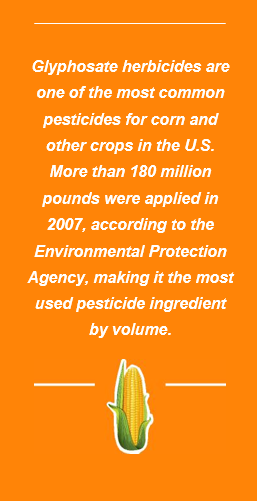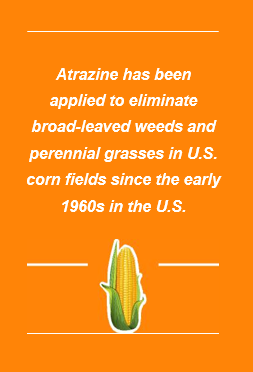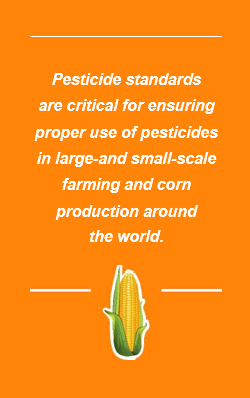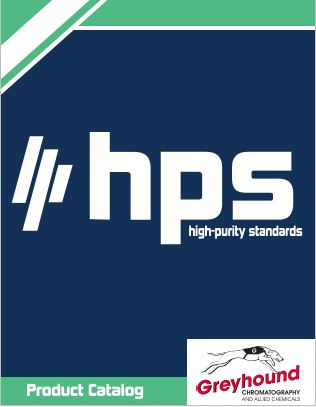ANALYZING 3 OF THE MOST COMMON CORN PESTICIDES
![]()
CORN IS AN IMPORTANT CROP in the United States. In 2010, farmers across the U.S. harvested more than 81 million acres of corn for 12.4 billion bushels, worth nearly $66 billion, according to the National Corn Growers Association. This corn is used for everything from eating off the cob to animal feed, plastics, fuel, sweeteners and glue. But it is not just the U.S. that benefits from the versatility of corn: This crop has become a major source of food for developing countries. Southeast Asia and Africa grow a substantial amount of corn for human consumption as well as to feed livestock.
In order for corn to become such a major food source across the globe, farmers have relied on improved technology to increase yields year after year. A substantial part of these larger harvests have come from new pesticides that help exterminate weeds and insects that have ruined crops in the past. Here are a few of the most popular and important corn pesticides that farmers and chemists may be interested in.
GLYPHOSATE
Glyphosate herbicides are one of the most common pesticides for corn and other crops in the U.S. More than 180 million pounds were applied in 2007, according to the Environmental Protection Agency, making it the most used pesticide ingredient by volume. This organic chemical is best known by its commercial name, RoundUp, which is produced by pesticide giant Monsanto.
Glyphosate blocks one of a plant’s enzymes, which leads to an inhibition of amino acid and protein production and then, ultimately, its death. Chemically referred to as -(phosphonomethyl)glycine, glyphosate is often mixed with other inert chemical compounds, including sorbic acid, methyl p-hydroxybenzoate and polyoxyethylene alkylamine, according to the Northwest Coalition for Alternatives to Pesticides.
Glyphosate salts are used as active ingredients for other specific farming tasks, the EPA explained. For example, the sodium salt of glyphosate is used to regulate peanut and sugar growth as well as make fruit ripen more quickly.
Because it is a non-discriminatory herbicide that works well on most vegetation, particularly broad-leafed plants and grasses, pure glyphosate would cause damage to crops when applied. However, since its introduction in the 1970s, Monsanto has worked to create glyphosate-resistant crops so that the herbicide kills only weeds and leaves the corn unharmed. This accounts for the pesticide’s success and popularity as well as a strong safety record and low operation costs, according to the European Industry Task Force on Glyphosate.
Some weeds—including the horseweed in the U.S., poinsettia in Brazil and goosegrass in Malaysia—have become resistant to the chemical. The EPA has said that glyphosate has no risk of mutation and does not cause cancer. It has low risk of occupational danger or toxicity in normal levels in food. The EPA also found the effects of glyphosate on animals, water sources and the environment to be “minimal.”
ATRAZINE
Second to glyphosate on the EPA’s list of commonly used pesticides was atrazine. Between 73 and 78 million pounds of this herbicide were used in the U.S. in 2007, and much of that was on corn. Atrazine has been applied to eliminate broad-leaved weeds and perennial grasses in U.S. corn fields since the early 1960s in the U.S. Globally, it is popularly used on corn as well as pineapples, sugarcane and many other crops, although it has been banned for use in the European Union. Atrazine is even used for weed reduction in non-farming settings, such as railroads, The Journal of Pesticide Action Network UK explained.
Chemically referred to as 1-Chloro-3-ethylamino-5-isopropylamino-2,4,6-triazine, Atrazine prevents photosynthesis in weeds, starving them. The NCAP explained that Atrazine is sometimes mixed with inert chemicals such as ethylene glycol, sodium sulfite and ethoxylated nonyl phenols. There are a number of methods for application of the herbicide, including groundboom sprayers, backpack sprayers, lawn handguns, aircrafts, tractor-drawn spreaders and many others
Atrazine has become such a major pesticide in the U.S. and across the globe because it is inexpensive, does not damage crops heavily and can be applied during a long window of time. However, this popularity has led to Atrazine being the most commonly detected chemical in water sources—groundwater, streams, lakes etc. It was banned in the EU in 2004 because of its prevalence in water, but the EPA has stated that it is not likely to be a human carcinogen, has low acute toxicity and is not dangerous in food. Since first being registered in the U.S. in 1959, there have been a number of studies and reviews of Atrazine’s safety.
Atrazine is also sold under the Trade names: Aatrex®; Gesaprim®; Atratol®;
LAMBDA-CYHALOTHRIN
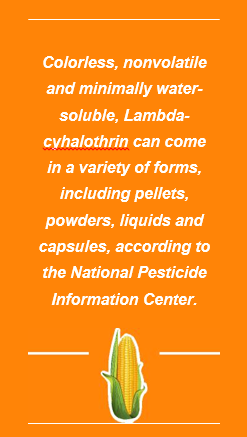
Colorless, nonvolatile and minimally water-soluble, Lambda-cyhalothrin can come in a variety of forms, including pellets, powders, liquids and capsules, according to the National Pesticide Information Center. Lambda-cyhalothrin is very similar to fellow pesticide and pyrethroid, cyhalothrin. The two are used interchangeably in some testing, such as toxicity.
Herbicides are among the most common pesticides for corn farming, but there are a number of corn insects that can interfere with high crop yields too. The University of Kentucky’s College of Agriculture, Food and Environment pointed to Warrior as an effective treatment for cutworms, armyworm, the European corn borer, the Southwestern corn borer, brown marmorated stink bugs, corn flea beetles, silk clipping insects and Southern corn leaf beetles, among others. When insects touch or consume the pesticide their nervous systems are damaged, killing or paralyzing them.
Lambda-Cyhalothrin is also sold under the Trade Names: Karate®; Commodore®; Matador®; Icon®
The World Health Organization reviewed the use of lambda-cyhalothrin and found that it presents no danger to the general population, although there are safety guidelines for farmers and others who work with the substance. Pesticides increase corn production. Because corn has become such an integral part of U.S. and global food production and consumption, the chemistry, safety and effectiveness of pesticides used on corn are also important.
CONTACT US
Tel: +44 (0) 151 649 4000
Email: marketing@greyhoundchrom.com
FOLLOW US
YOU MAY ALSO BE INTERESTED IN OUR NEWSLETTER
About the Author
Susan Massie, Sales & Marketing Director, Greyhound Chromatography and Allied Chemicals Email: sue@greyhoundchrom.com
Susan Massie is the Sales & Marketing Director for Greyhound Chromatography and Allied Chemicals, affectionately known as 'Greyhound' in our scientific community. Greyhound was founded by Susan's husband Paul Massie more than 40 years ago, Susan hasn't been in the business for all of that time but has been involved with Greyhound for over 17 years. Greyhound continues to grow, expanding into new markets and taking on the challenges of our ever changing environment. It's heartwarming to witness the world waking up to the fact that we are damaging our planet on a daily basis. Every action we take has a direct effect on our planet and the world we leave behind for future generations. Susan is passionate about climate change and is happy to work in an industry that can have a direct effect on reducing the impact of our actions on the environment. All of the team at Greyhound take our responsibilities very seriously, the products that we supply are used by the world's leading scientists and chemists as they endeavour to monitor and repair the environment. All is not lost, if we all take responsibility for our actions, from reducing our waste and reusing or recycling our material collateral we can make a difference. The internet is full of useful advice and guidance, Susan is proud to contribute to that wealth of knowledge whenever she can.
Greyhound prides itself on personal service which provides prompt, efficient, cost-effective, safe delivery of all products. Greyhound provides technical advice and distribution of Certified Reference Standards and Materials, Laboratory Consumables, Solvents and Reagents across all scientific disciplines. Greyhound Chromatography offers over 1 Million products from its UK warehouse. The team at Greyhound are proud to support the work of the world's leading scientists and chemists as they challenge the abuse of our planet and try to make a difference to the world we leave behind for our ancestors.
You can view Susan's Linked In Profile here https://www.linkedin.com/in/susan-massie-79ab4121/


